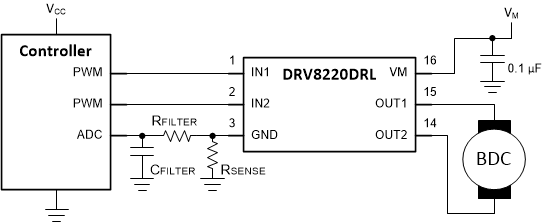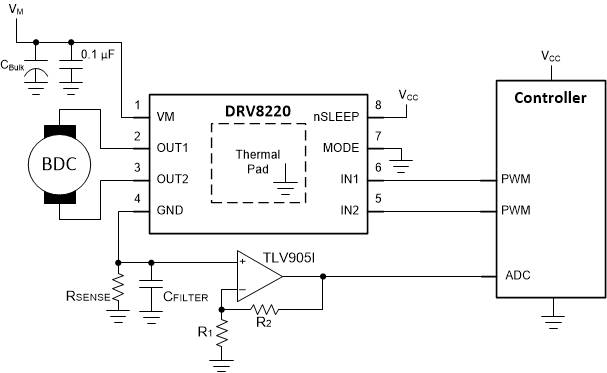SLVSFU5B February 2020 – August 2021 DRV8220
PRODUCTION DATA
- 1 Features
- 2 Applications
- 3 Description
- 4 Revision History
- 5 Device Comparison
- 6 Pin Configuration and Functions
- 7 Specifications
- 8 Detailed Description
- 9 Application and Implementation
- 10Power Supply Recommendations
- 11Layout
- 12Device and Documentation Support
- 13Mechanical, Packaging, and Orderable Information
Package Options
Mechanical Data (Package|Pins)
Thermal pad, mechanical data (Package|Pins)
- DSG|8
Orderable Information
9.2.4 Current Sense
A small shunt resistor on the GND pin can provide current sense information back to the microcontroller ADC. The microcontroller can use this information to detect motor load conditions, such as stall. Figure 9-23 shows an example schematic using the DRL package. If better current sensing dynamic range is needed, an amplifier can be added as shown in Figure 9-24.
The DSG thermal pad may be connected to the board ground net or the GND pin/sense signal net.
 Figure 9-23 Shunt resistor on GND pin of DRV8220 in
the DRL package
Figure 9-23 Shunt resistor on GND pin of DRV8220 in
the DRL package Figure 9-24 Current sense
amplifier example
Figure 9-24 Current sense
amplifier example